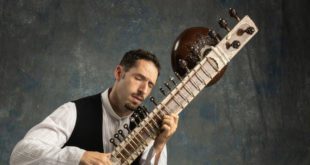Over the last 125 years, Vancouver has become home to a broad range of ethnic groups, who have brought with them a vibrant and distinct assemblage of cuisines, heritage, belief systems and artwork. Although these cultures have retained a sense of their original identity, their influence has shaped Vancouver into a thriving, international city with a unique vibe. Some of the influential forces behind this culturally rich, global metropolis are:
 Japanese
Japanese
Walking through Vancouver, the aesthetic influence of Japanese culture is everywhere, from serene public gardens to the thousands of blooming cherry trees planted throughout the city’s green spaces. The first wave of Japanese immigrants, called Issei (or first generation), arrived in Vancouver between 1877 and 1928, many of whom settled in small fishing villages along the Pacific coastline and on idyllic farms in the Fraser Valley. Since then, it’s become easy to experience an authentic part of this culture by dining at one of the many Japanese restaurants, enjoying a tea ritual at the Nitobe Memorial Garden or attending the annual Powell Street Festival, the largest Japanese-Canadian community event in Vancouver.
 Chinese
Chinese
During the late 1800s, the first Chinese immigrants began arriving in Vancouver to work on railroads and in the mines. As more workers and families began migrating to Vancouver, the neighborhood kept growing, eventually developing into the third most populous Chinatown in North America. Step into this bustling cultural district, where you can indulge in authentic cuisine, shop for specialty items in traditional markets and teashops, and experience contemporary nightlife with a new generation of Chinese-Canadians.
 First Nations
First Nations
Although a very small percentage of Vancouver’s current population is comprised of First Nations people, the culture of these native tribes permeates the city — from towering totem poles located throughout public green spaces to contemporary aboriginalart galleries located along downtown throughways. Spend the day perusing historical artifacts and authentic artwork at the UBC Museum of Anthropology or view the extensive collection of artwork, carvings and jewelry at the Bill Reid Gallery of Northwest Coast Art. For an authentic interactive experience, venture to Stanley Park’s Klahowya Village, a living village where visitors can taste authentic aboriginal cuisine, hear the lore of ancient stories, and interact with First Nations weavers and carvers.
 Indian
Indian
More than a century ago, Vancouver’s booming lumber industry lured thousands of immigrants from Punjab, a region located on the Indian-Pakistani border. As this cultural group became more established in Vancouver, Punjabi Market — or Little India, as it’s sometimes called — emerged as an exotic district occupying six blocks along Main Street. Start at East 49th Avenue, and walk down Main Street to peruse sparkly gold bangles, vibrant silks and aromatic spices. Don’t miss out on the authentic Indian cuisine, whether you’re looking to try signature samosas, curried vegetarian dishes or something more adventurous.
 Italian
Italian
After World War II, thousands of Italians moved to Vancouver, settling into the Grandview neighborhood, which is located on Commercial Drive. During the 1950s, this area became known as Little Italy due to its high concentration of Italian residents, restaurants and businesses, but over time, a number of other ethnicities infiltrated the area, creating a culturally diverse neighborhood. Despite the name Commercial Drive, this area continues to have remnants of Italian culture. Learn more about Italian-Canadian heritage at the Italian Cultural Centre, watch a bocce ball game in nearby Confederation Park or enjoy a rich cup of espresso from one of the many Italian coffee shops along the Drive.
 Desi Today Magazine
Desi Today Magazine



